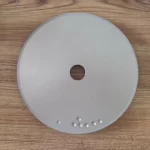Tips of Vibration Analysis in Grinding Machines
Grinding machines are widely used in various industries for surface finishing, precision grinding, and other applications. In order to achieve the desired outcome, it is essential to monitor the process closely and analyze any vibration signals that may occur during operation. Vibration analysis can provide valuable insights into the condition of the machine and help identify potential issues before they become critical problems. In this article, we will explore some important tips for conducting vibration analysis in grinding machines.
1. Understanding the Basics of Vibration Analysis
Before delving into specific tips for vibration analysis in grinding machines, it is important to have a good understanding of the basics. Vibration analysis involves the measurement and analysis of vibrations and oscillations that occur within a machine or a system. These vibrations can be caused by various factors such as imbalances, misalignments, wear, or faulty components.
When performing vibration analysis, it is crucial to choose the right measurement equipment and sensors. Accelerometers are commonly used to measure the vibration levels in grinding machines. These sensors convert vibrations into electrical signals that can be analyzed and interpreted using specialized software.
Additionally, it is essential to establish a baseline vibration level for the machine. This can be done by conducting regular vibration measurements and creating a historical database. By comparing subsequent measurements to the baseline, deviations can be identified and analyzed.
2. Monitoring and Analyzing Vibration Signals
Once the basics of vibration analysis are understood, it is time to monitor and analyze the vibration signals in grinding machines. The vibration signals can provide valuable information about the condition of the machine, such as the presence of imbalances, misalignments, or worn components.
There are several key parameters that should be monitored during vibration analysis. These include vibration amplitude, frequency, and phase. Vibration amplitude refers to the magnitude of the vibration signal and can indicate the severity of the problem. Frequency analysis can help identify the source of the vibration, while phase analysis can provide insights into the relationship between different vibration signals.
It is important to note that not all vibrations are indicative of a problem. Some level of vibration is expected in grinding machines due to the rotating components and the nature of the grinding process. Therefore, it is crucial to establish acceptable vibration levels for each machine and compare measurements accordingly.
3. Identifying and Resolving Vibration Issues
Once vibration signals have been monitored and analyzed, it is time to identify and resolve any vibration issues that may arise in grinding machines. The following tips can help with this process:
A. Regular maintenance: Implement a proactive maintenance program that includes regular inspections, lubrication, and replacement of worn components. This can help prevent vibration issues caused by faulty or worn parts.
B. Balancing: Imbalance is a common cause of vibration in grinding machines. Regularly check and balance the rotating components such as grinding wheels and spindles to minimize vibration.
C. Alignment: Misalignment can also cause vibration in grinding machines. Ensure that all components are properly aligned and adjusted to reduce vibrations.
D. Damping: Use vibration-damping materials or systems to minimize the transmission of vibrations from the machine to the surrounding environment. This can help reduce the impact of vibrations on the precision and stability of the grinding process.
E. Expert consultation: If persistent vibration issues are encountered despite following the above tips, it may be necessary to consult with experts or manufacturers for further guidance. They can provide specialized knowledge and support in resolving complex vibration problems.
In conclusion, vibration analysis is a crucial tool for maintaining the performance and reliability of grinding machines. By understanding the basics of vibration analysis, monitoring and analyzing vibration signals, and taking necessary measures to identify and resolve vibration issues, operators can ensure optimal machine performance and extend the lifespan of their equipment.
.webp)
